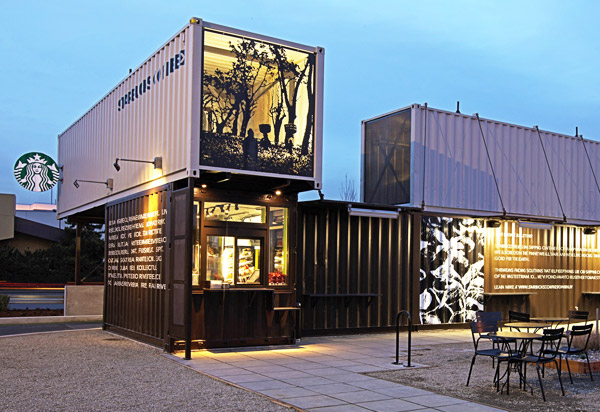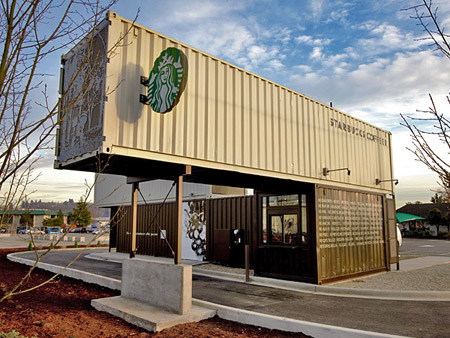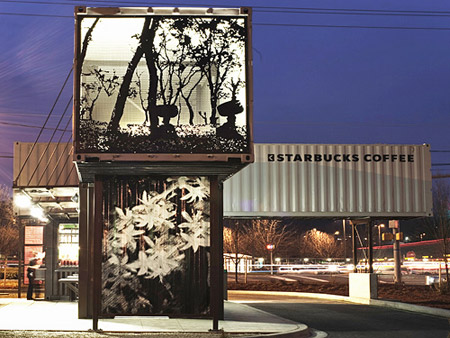by Nate Holmes on JANUARY 18, 2012 in MOBILE, ONLINE-OFFLINE INTEGRATION
In the 20 or so years leading up to the Great Recession, retailers went through massive store expansion in developed markets like the US, UK, and Canada. It was a period of optimization (find the right formats and perfect the model) and replication (open more stores in more markets).
Over the last several years, the combination of the recession, explosive growth in e-commerce, and other emerging shopper behaviors has led some to question whether most developed markets are actually over-stored.
In RNG’s view, the answer is “Yes!”–we are headed to a modern retail landscape with fewer stores, smaller stores, and very different formats. Some stores will go away or will massively reduce their footprint (Borders, Blockbuster, Gamestop, FYE, etc). Others will survive or even thrive without deep technology integration given their unique positioning (Whole Foods, Trader Joes, Dollar General).
Most retailers, however, will have to adopt new strategies to provide compelling reasons for shoppers to keep coming and buying in stores. Here are 10 strategies you can expect to see retailers pursue.
1. Site and Store Integration
Tesco Direct
While retailers will continue to feature and stock high-velocity products in-store, they will increasingly offer an “endless aisle”of additional SKUs online, letting them grow selection without taking on the additional cost and risk of stocking products in-store. The low-commitment model will simply use signage to guide shoppers to the extended online assortments, but some retailers will dedicate space to let shoppers order from inside the store.
While retailers like Kohl’s and JC Penney have rolled out proprietary kiosks for their websites, the huge capital investment and inferior UI in these makes it likely that retailers will begin turning to a $500 iPad instead.
2. Automated Retail
As the online share of some categories continues to grow, retailers’ appetite to manage and merchandise those categories will diminish. Retailers will deploy more self-service technology that enables shoppers to select, buy, and take products away, often without even having to manage the assortment or take the product into their distribution network.
Macy’s is already doing this with Best Buy kiosks inside its stores, enabling them to expand into new categories with attractive margins.
Automated retail is also getting traction in locations outside of the store, like airports, malls, and college campuses.
3. Prepared and Ready-to-Heat Food
The last few years have seen retailers across channels–drug, mass merchandise, discounters–expanding their assortment of food and other essentials. The goal is to drive trips and increase basket sizes. Prepared food in particular, whether it be ready-to-eat, ready-to-heat, or counter prepared, has become a popular addition to stores. By shifting some of the work of meal preparation from the shopper to the retailer, many retailers have increased the convenience of their offer and given shoppers another compelling reason to stop by.
Examples include Target’s new CityTarget format and CVS’s urban format, which are attempting to attract on-the-go city shoppers with quick meal options. Marks & Spencer and Morrison’s have gone so far as to break out their on-the-go food offerings into standalone stores.
4. Instructional/Educational Space
Whole Foods Cooking Class
Many retailers are trying to go beyond a merely transactional relationship with their shoppers to help them learn and get the most value from the products they buy.
Lululemon has found great success with its yoga classes. High end grocers like Wegman’s and Whole Foods offer cooking classes, and Loblaw’s recently opened a Toronto flagship with a large department devoted to classes. By offering classes like these, retailers can attract a devoted shopper base to spend more time in-store while building brand loyalty.
5. Interactive Space
Think of this as the Apple approach applied more broadly. Instead of stacking shelves high with boxes, why not lay products out in a more attractive environment and let shoppers trial them? This approach will go along well with having the site in store, as devoting space to less products will require the endless aisle.
Disney Experiential Environment
6. Retailtainment
One way to get shoppers in the door is to provide an immersive, entertaining shopping experience. This is something that retailers like Disney and Cabela’s know well. Of course, the strategy has huge implications for space productivity on a micro level. And it won’t work if the brand, assortment, or experience aren’t strong. But creating a destination that’s entertaining to visit will remain a key strategy.
See our sister blog, In-Store Trend’s post on retailtainment here.
7. Services
In the new retail world, brick-and-mortar stores need to master one of two things in order to win–being low price or being differentiated. One way to differentiate is to offer a unique set of services in-store. The right services will drive incremental trips, increase loyalty, and multiply a shopper’s annual spend.
Space will be dedicated to health (e.g. diagnostics), financial, technology, home energy, transportation, and more. The key will be to link these services to the retailer’s overall offering.
8. Showroom
E-commerce and price comparison apps are turning some retailers into showrooms. Some retailers will embrace this and convert their space or open new formats to take advantage of it, enabling big box retailers to manage inventory risk with space productivity or online retailers like Taobao to have a physical presence.
These showrooms will have little or no inventory and will offer options for ordering and delivering to home, the store, or a third party location.
Some retailers have recently experimented with this strategy, like Taobao in China and Walmart in the US. The key will be to create a compelling enough mix of products, service, and fulfillment options to make the approach pay out.
9. Social Space
While nothing new, providing social space in the store will become more popular. By having places for people to just hang out–bars, restaurants, coffee shops–retailers can get shoppers to spend more time in their stores. Ikea has taken an interesting approach and opened a Manland, offering guys a place to hang out while their significant others shop. Manland features arcade games, comfortable sofas, magazines, video games, and free hot dogs.
10. Store-Within-a-Store
Sephora in JC Penney
Renting space to trip-driving brands within big box stores is likely to become extremely popular over the next few years. Target just announced that they will be taking this approach with Apple as well as local boutique shops across the country. Look for retailers to take a highly rotational/seasonal approach with these mini-stores and focus on showcasing innovation.
What other strategies have you seen? Why do you think shoppers will still visit stores?
Source: http://connected.retailnetgroup.com/index.php/2012/01/18/10-ways-retailers-will-reinvent-the-store/







